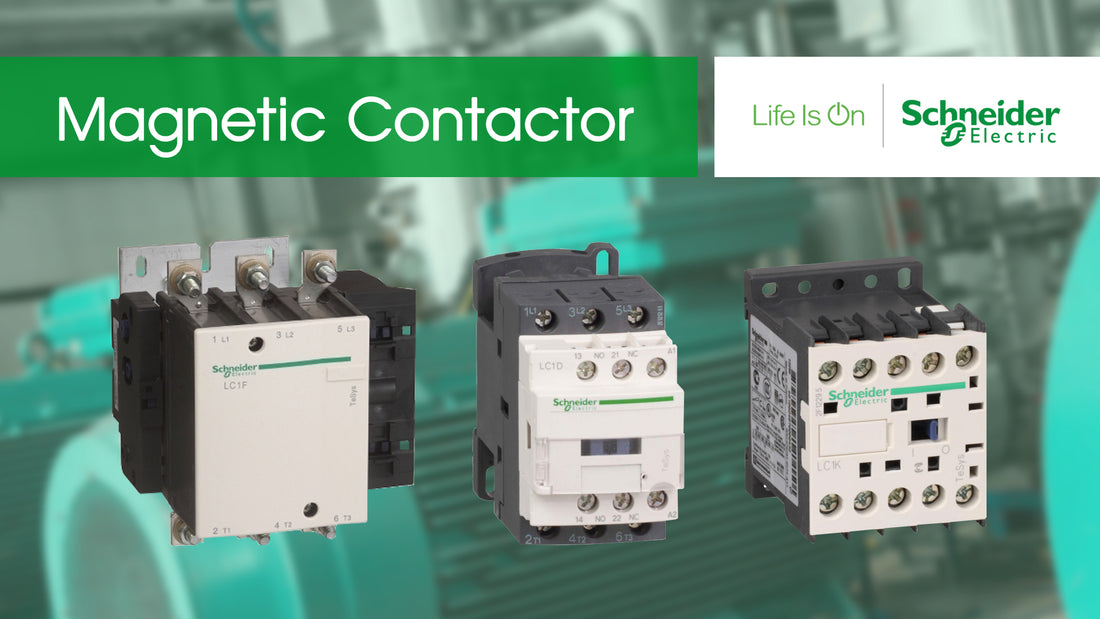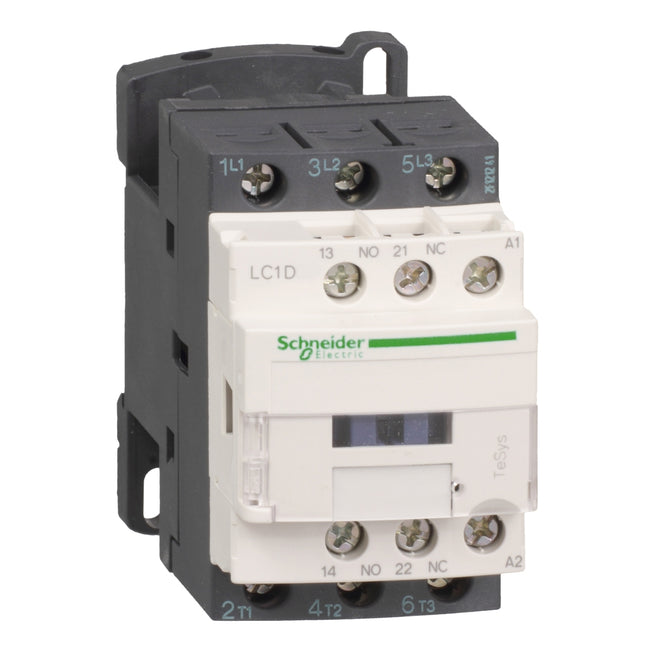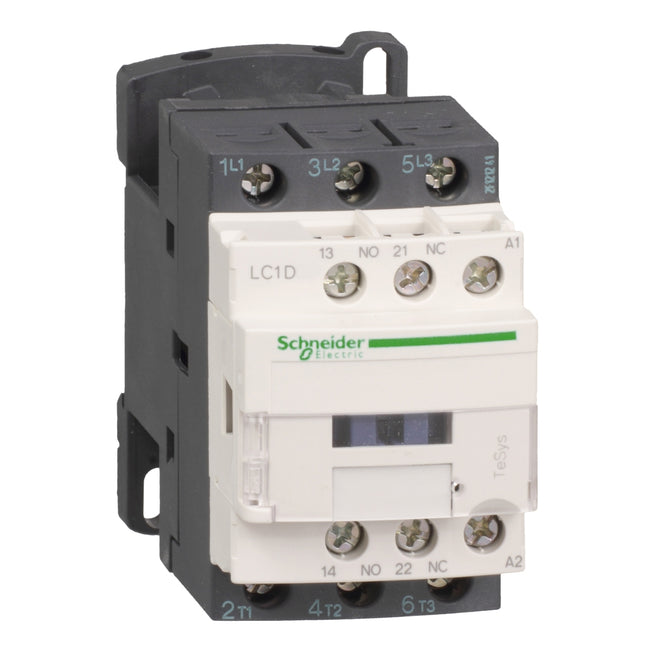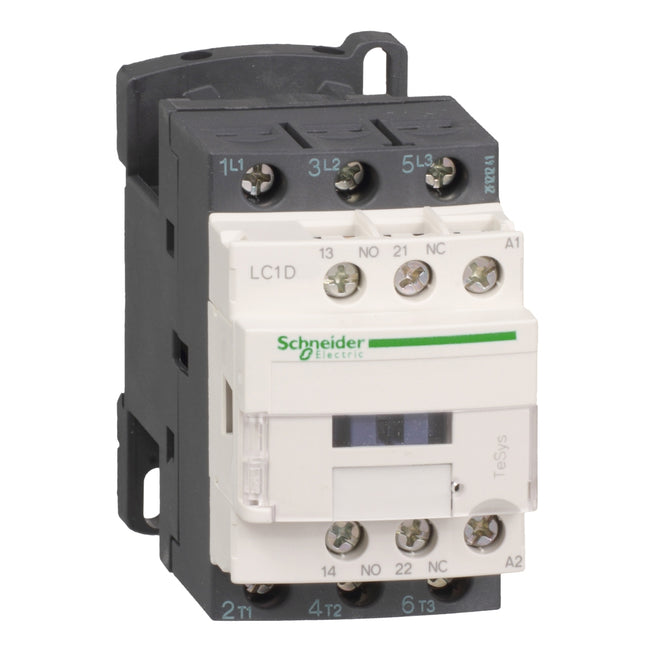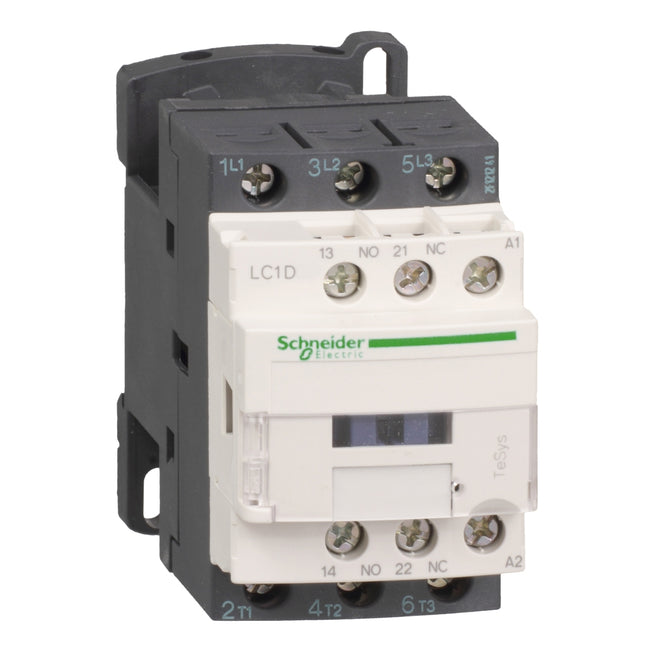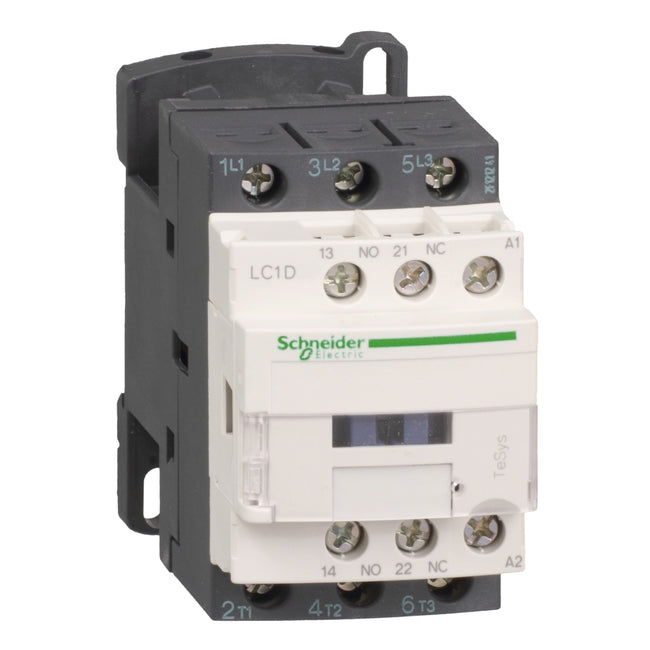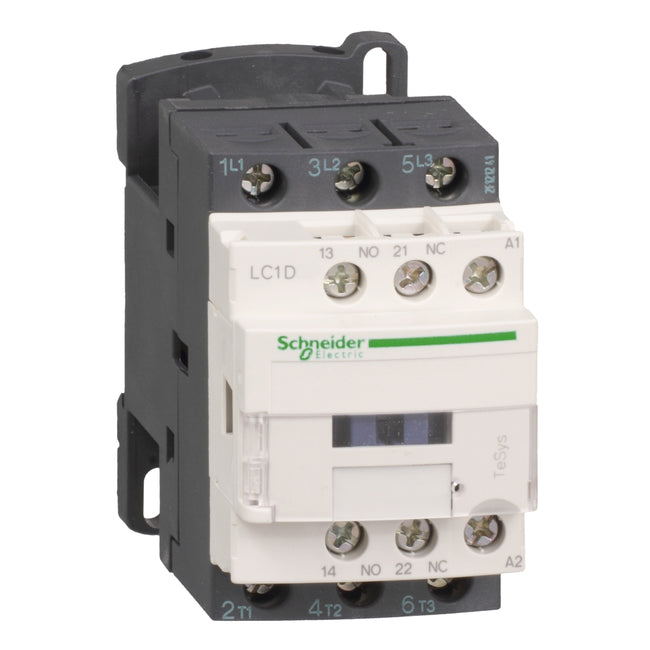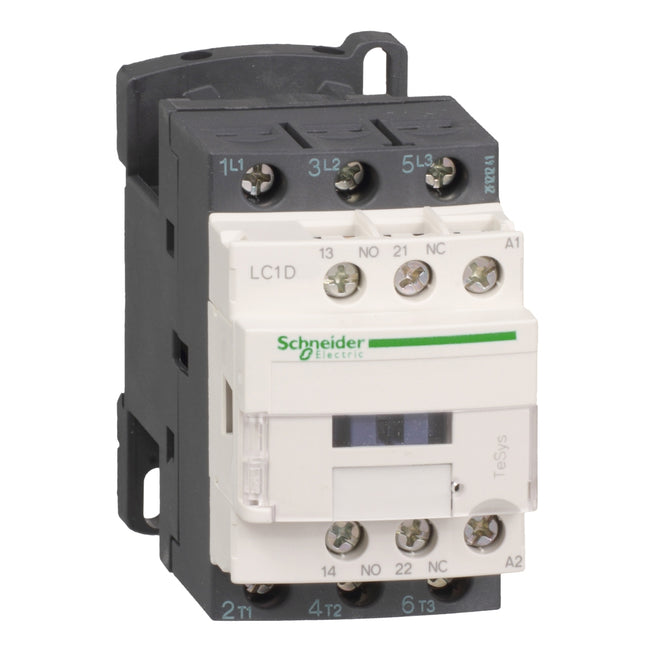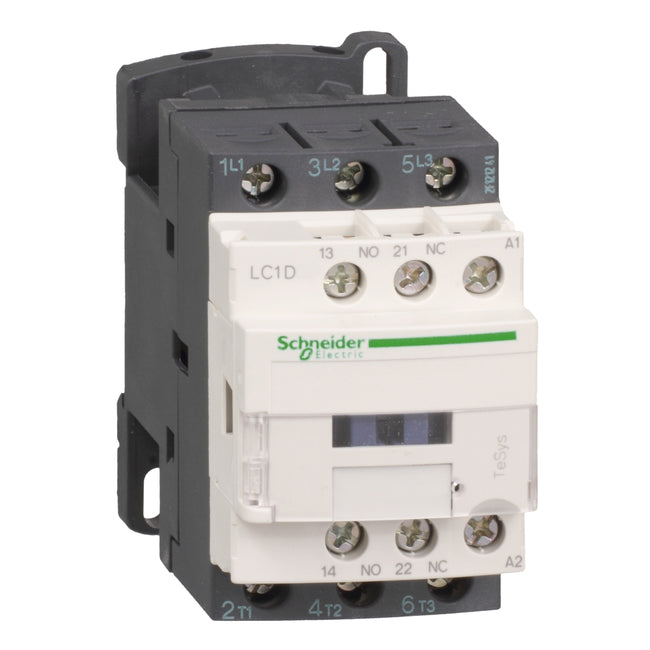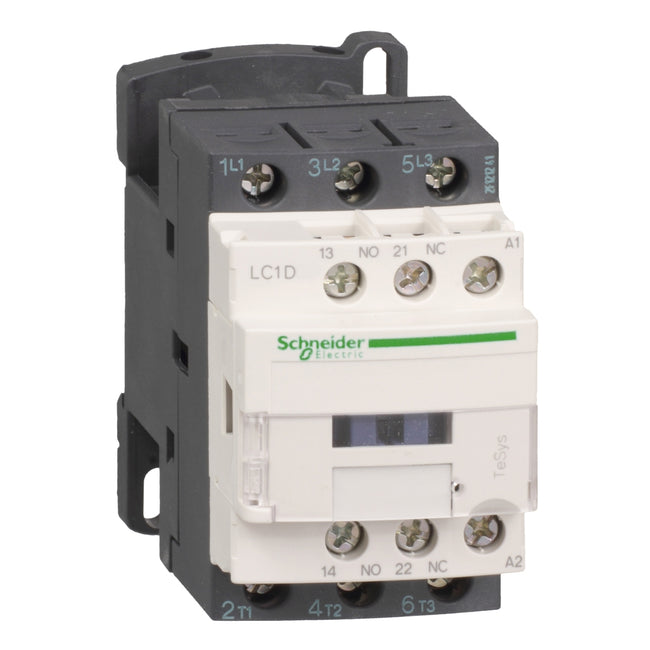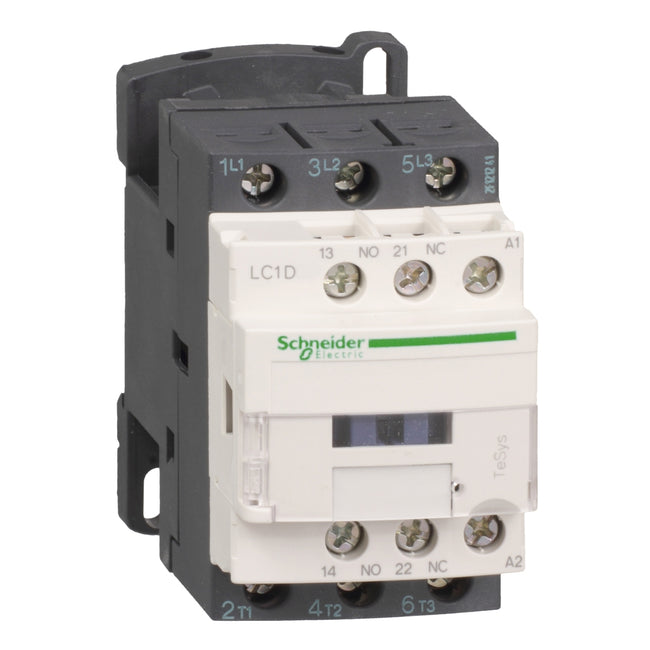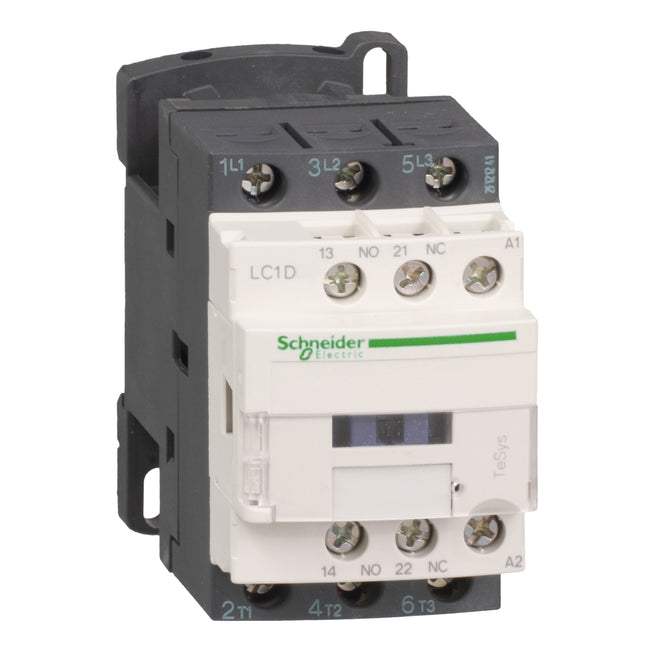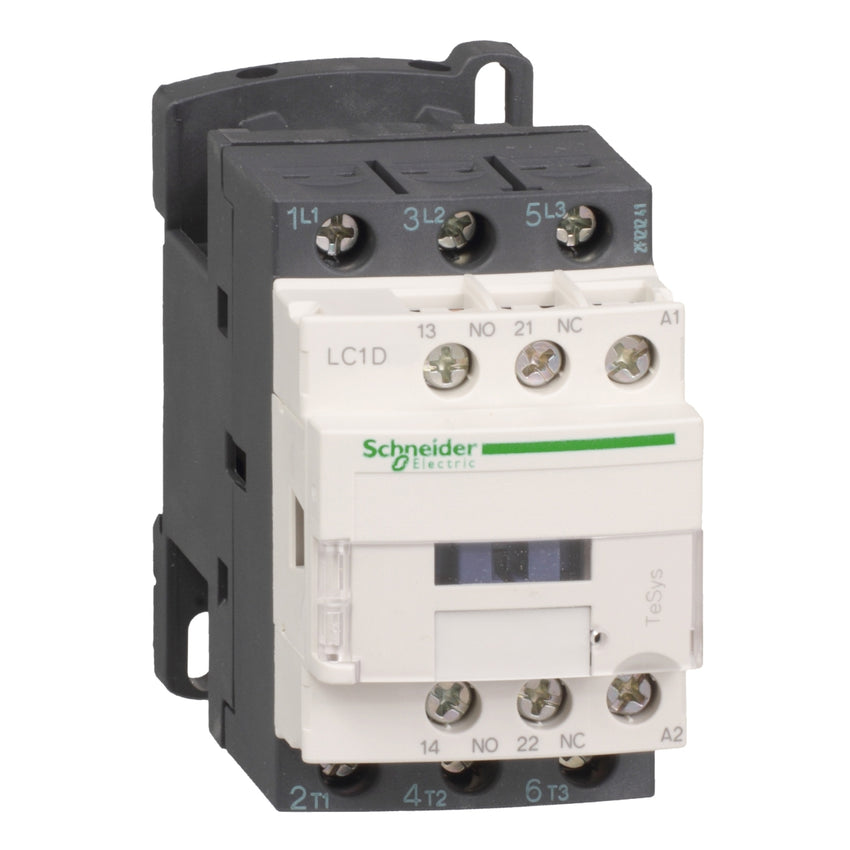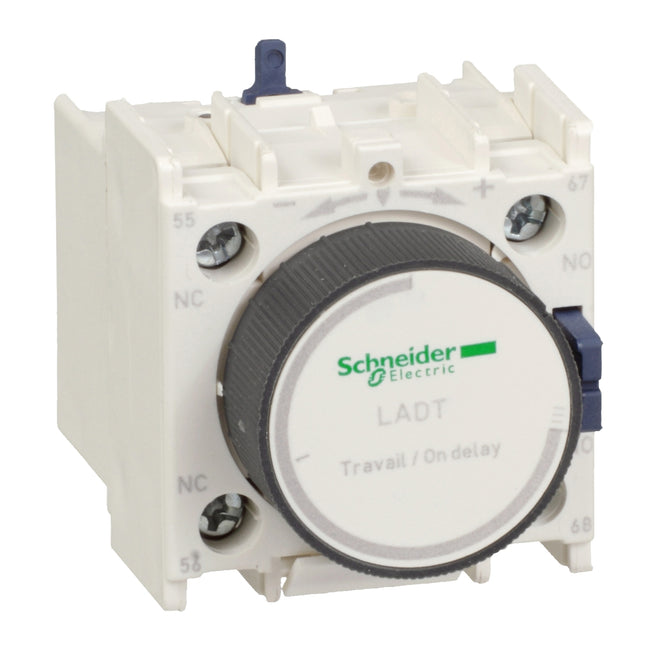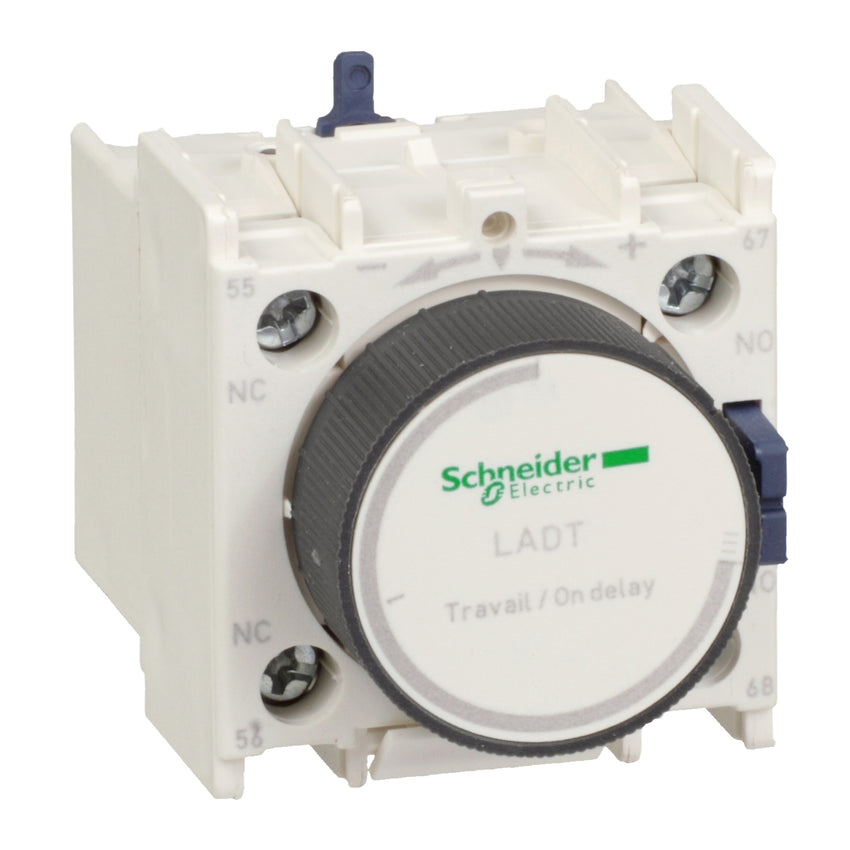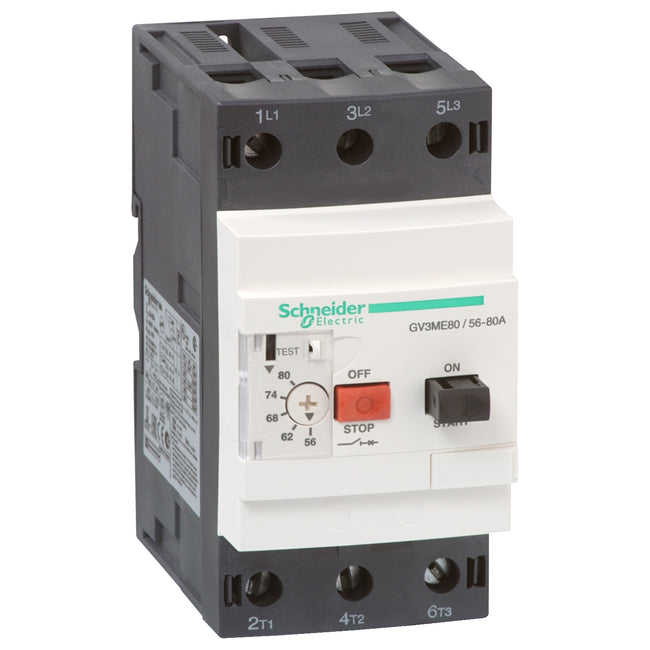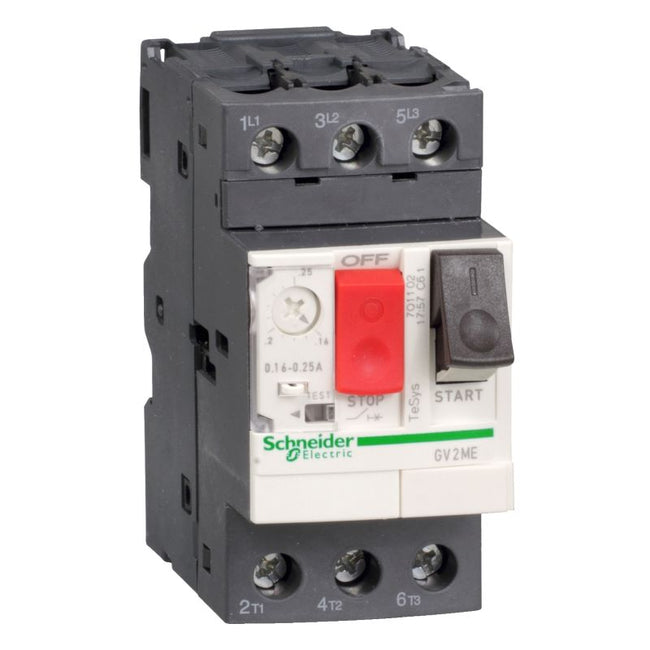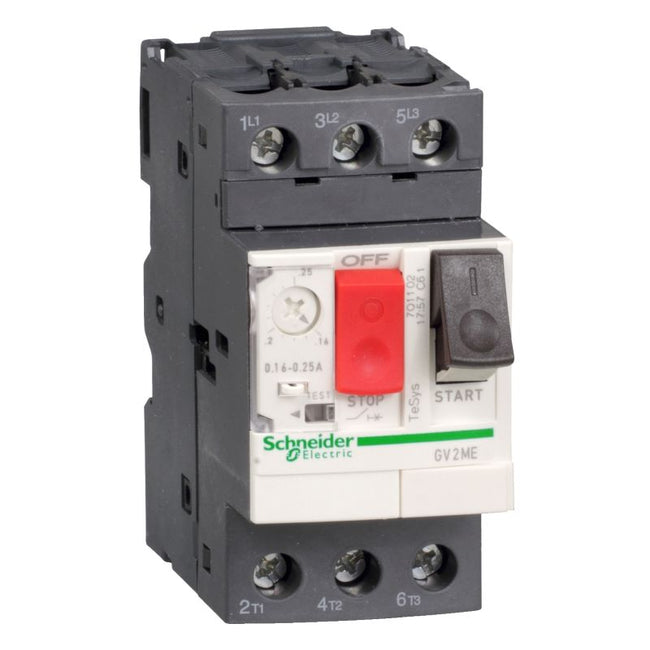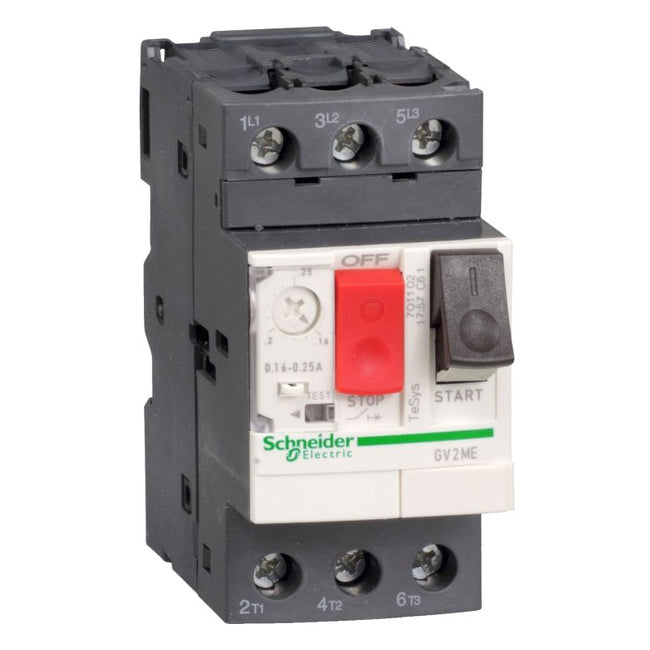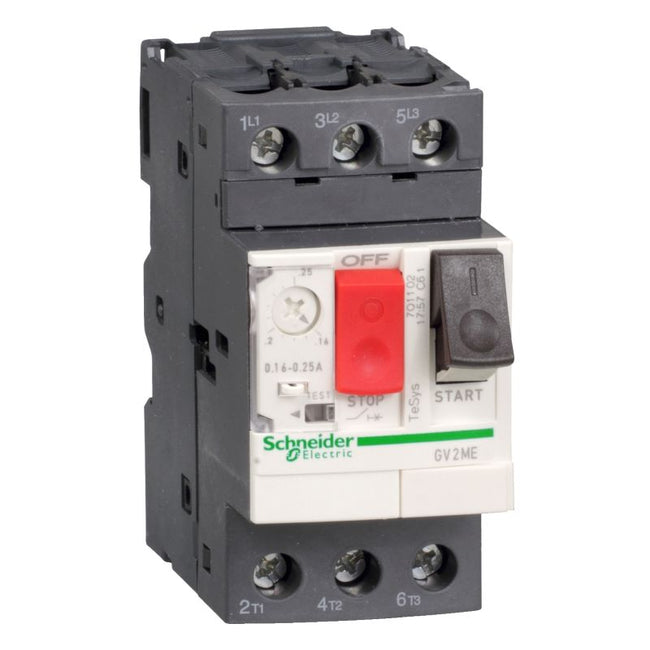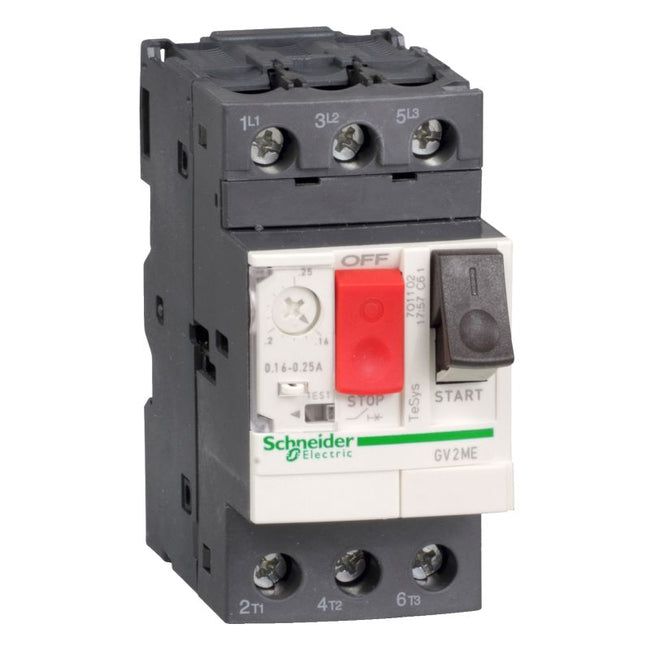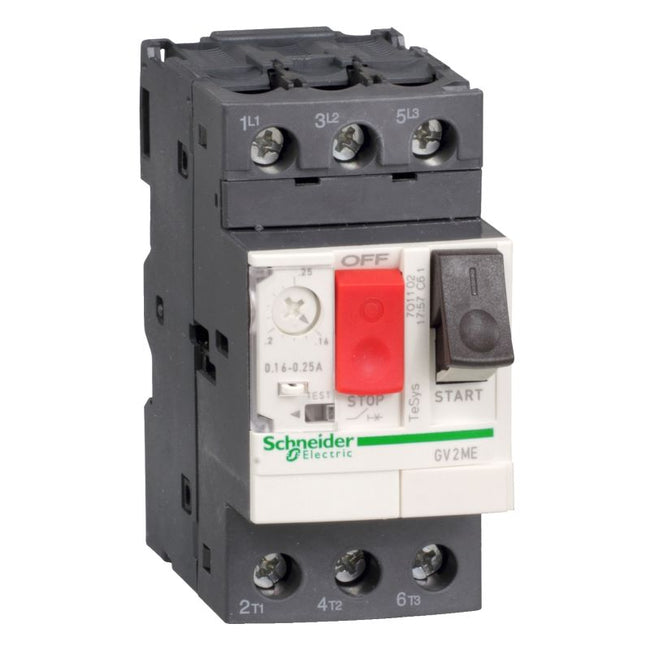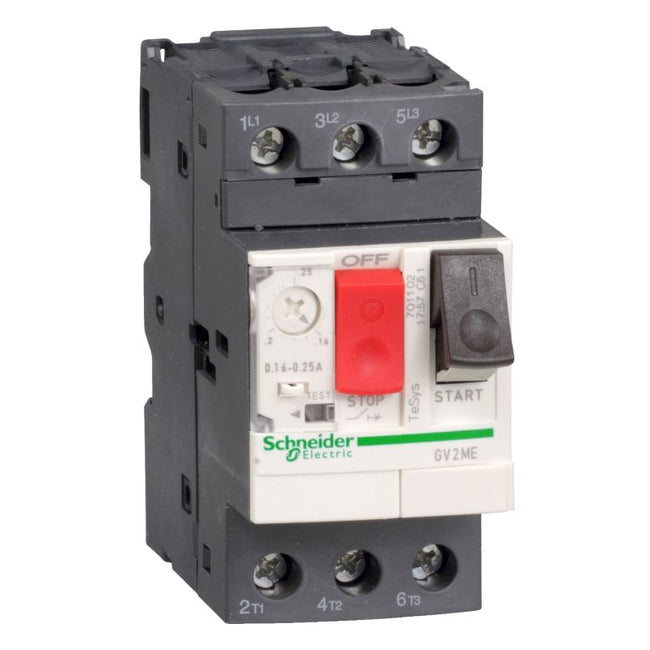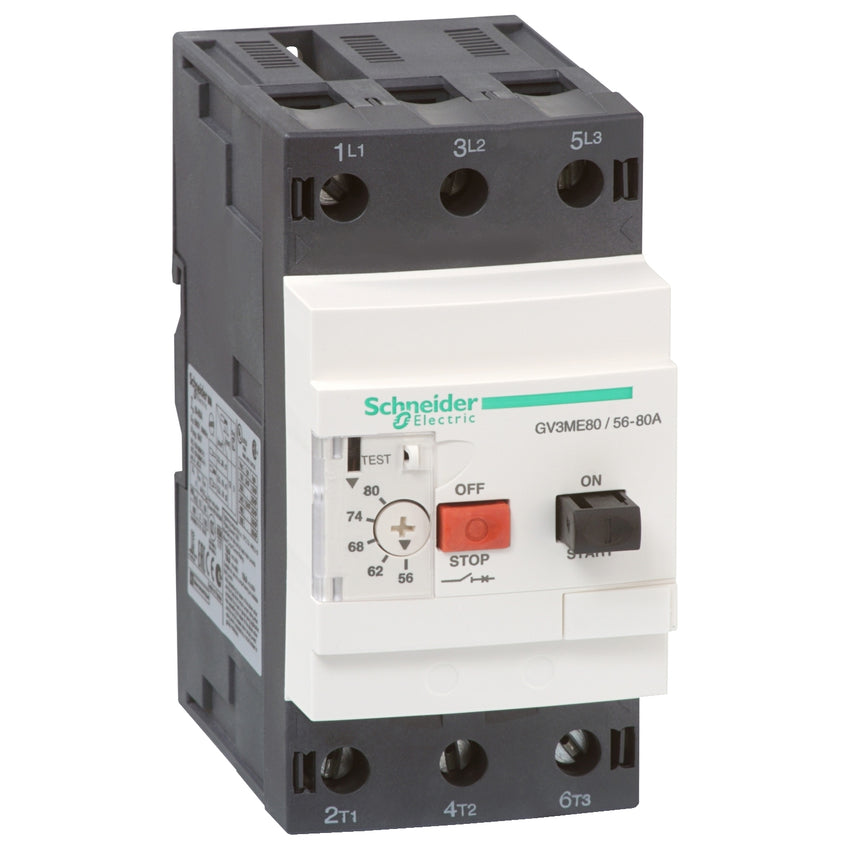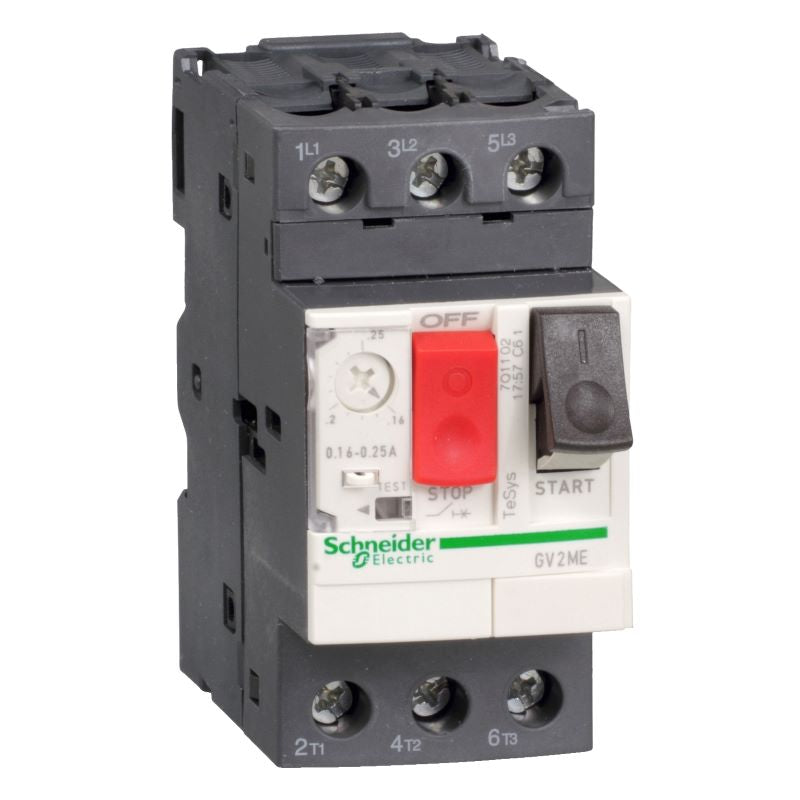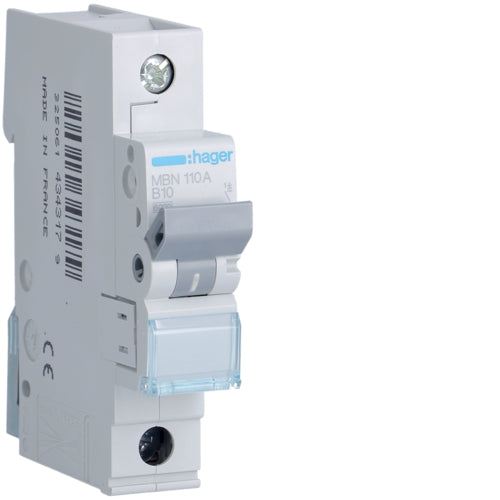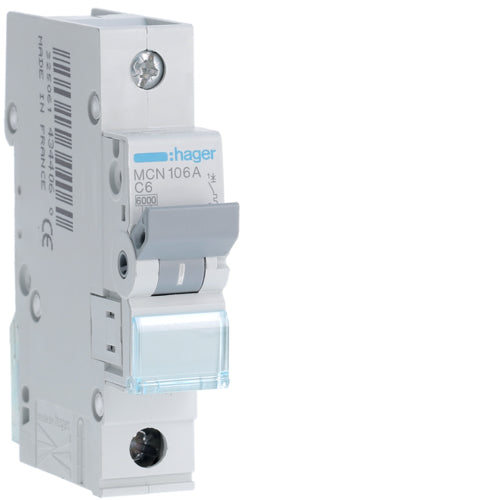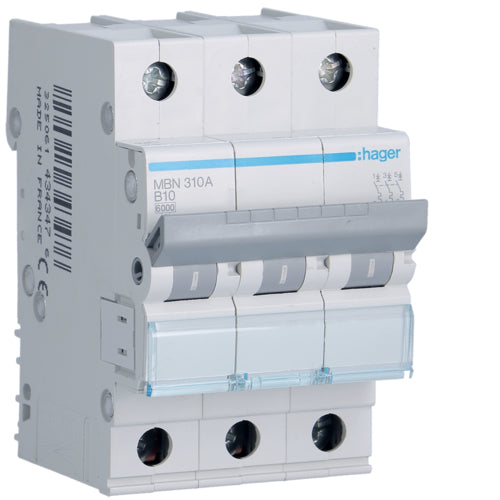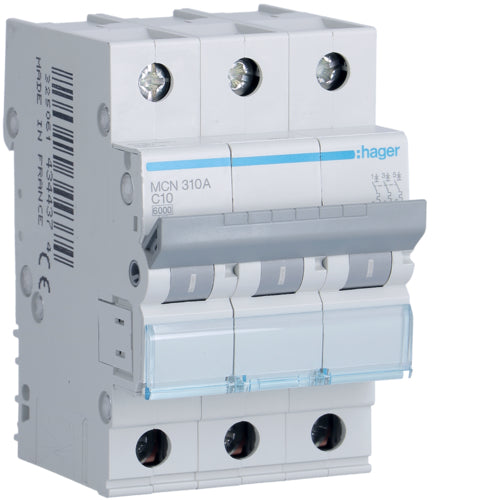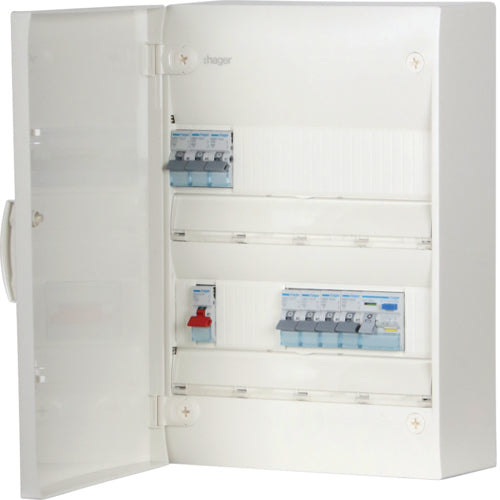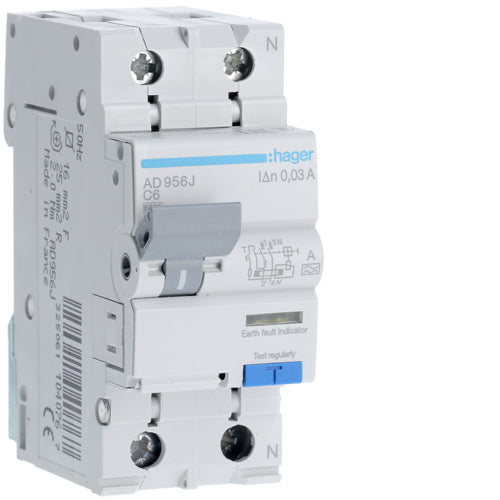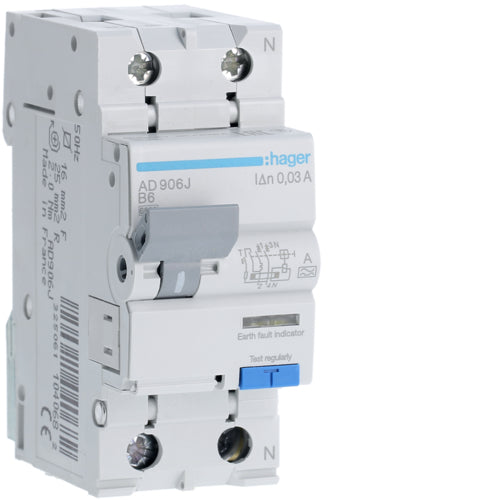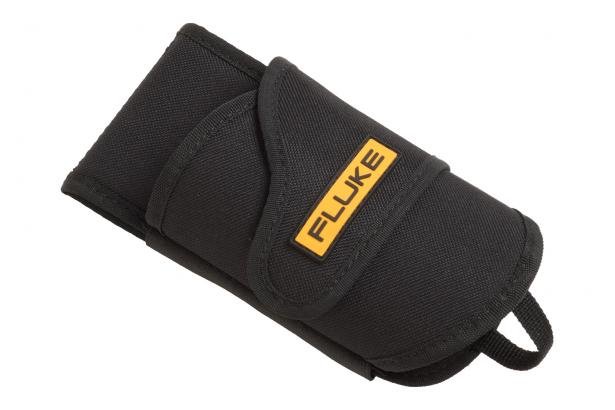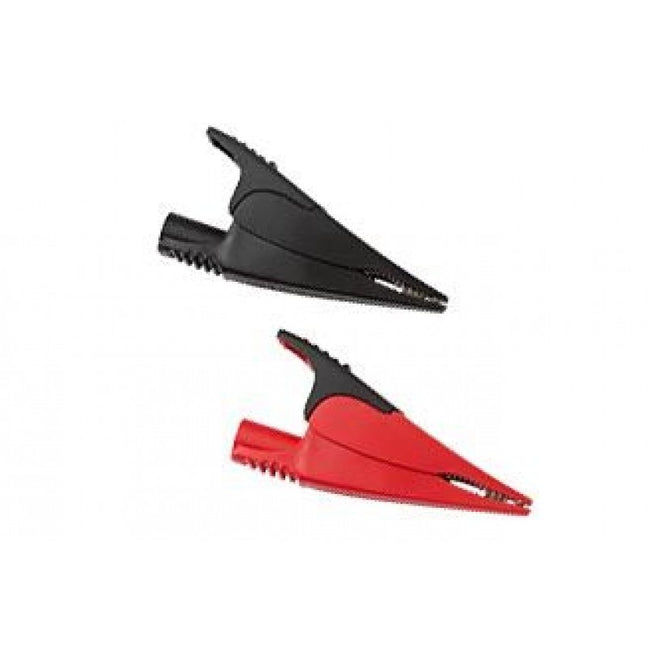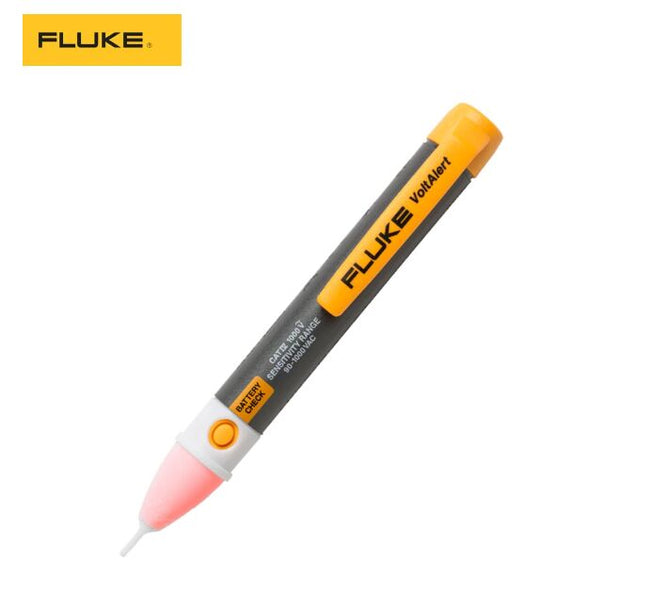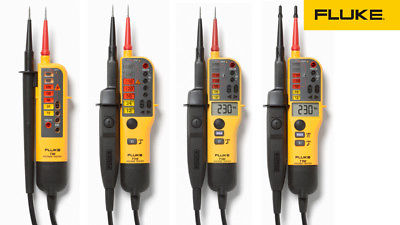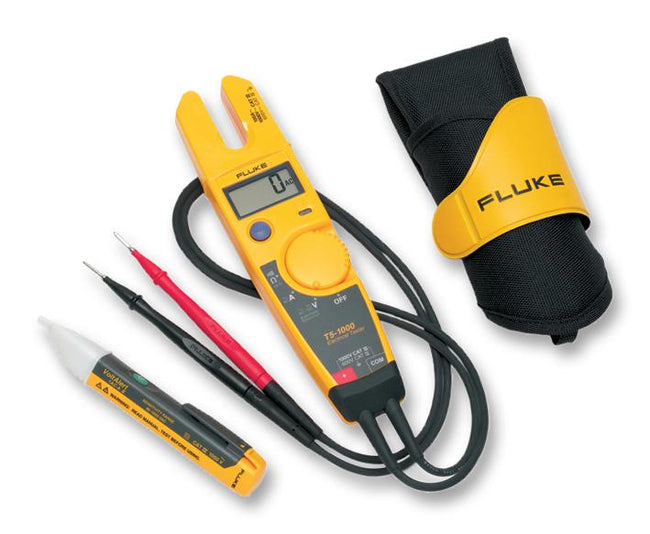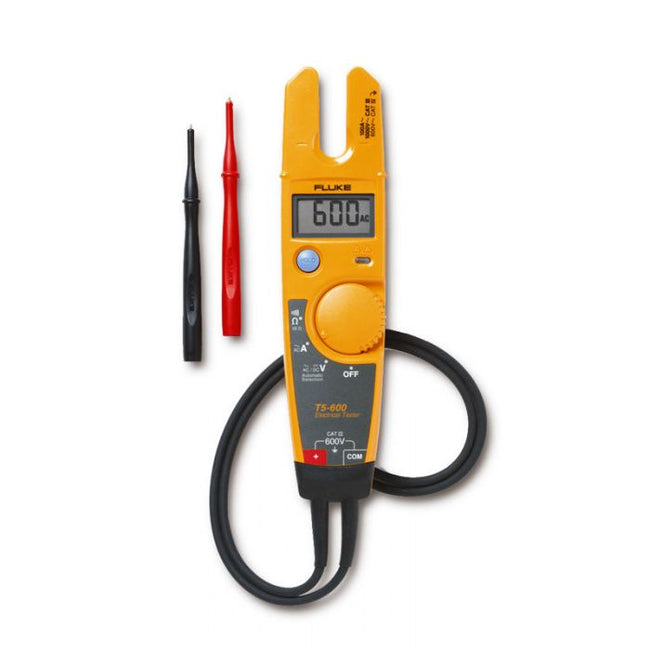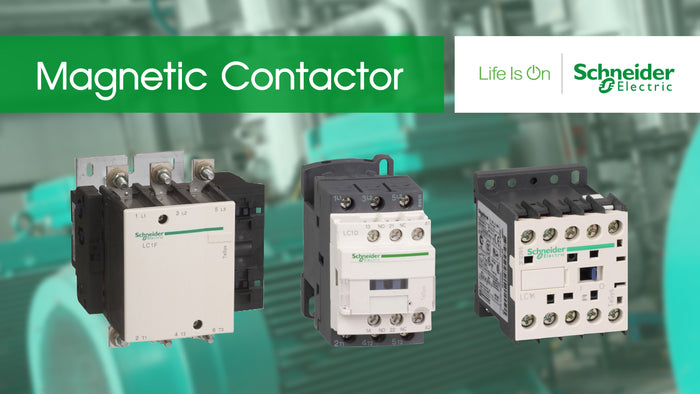Electrical Contactors are a means of controlling an electrical circuit. This blog will examine the different types of electrical contactors and how they work as well as explaining the differences between AC contactors, DC contactors and relays.
What is a Contactor?
A contactor is an electrical switch whose function is to make or break an electrical connection between a power supply and a load. The contactor is typically powered at a much lower level than the switched circuit. For example, it is common for a contactor at with a coil voltage of 24V to control a 230V motor switch.
Common applications for contactors include electrical motors, lighting, heating systems, or other appliances that require a high electrical load. Contactors come in all shapes and sizes, from ones you can easily lift in your and to others which measure over a meter in length. Their breaking current range can also vary from a few amperes to a few thousand amperes.
What parts make up a Contactor?
To understand how a contactor works, you must first understand that a contactor has 3 main parts;
- The electromagnetic coil
- The contacts
- The enclosure
The electromagnetic coil
This provides the main force in a contacts that closes the contacts. A coil is wound around an electromagnetic core material and behaves life an electromagnet. There is a fixed and a moving part which enables the structure behaves like a spring return mechanism.
The armature is a rod connecting to the movable parts.When the coil's force exceeds the spring's force both contacts connect. However, when the springs force is exceeding the coil's force the contacts disconnect.
A contactor coil can either have an AC or DC current input.This current is supplied by an external circuit and serves only to excite the electromagnetic core. AC contactors have a soft laminated iron core, which helps reduce eddy current losses. In DC contactors there is a solid electromagnetic core as the issue of eddy current losses does not arise.
The Contacts
The contacts function is to carry current in contactors There are a number of different contact types which are auxiliary contact, power contact and contact spring. The power contact can be broken down into two types; stationary and movable contact.
The contact material must have a very high resistance and a stable arc resistance capable of withstanding erosion and mechanical stresses.
The Enclosure
The enclosures job is simply to house and protect the contacts from bad weather, dust, explosion hazards and oil. It holds the contactor together!
In short, the contactor working is as follows...
Current from the external control circuit passes through the contactor, exciting the electromagnetic core. In turn, the coil/electromagnet creates a magnetic field which makes the contactor move the armature. A normally closed contact then makes the circuit complete between the fixed and moving contacts. The current is then able to pass through these contacts to the load.
When the current is removed, the coil becomes de-energized, and the magnetic force falls to zero. The spring force is thus higher and pulls back the armature opening the circuit. The design of contactors facilitates rapid ON-OFF action.


